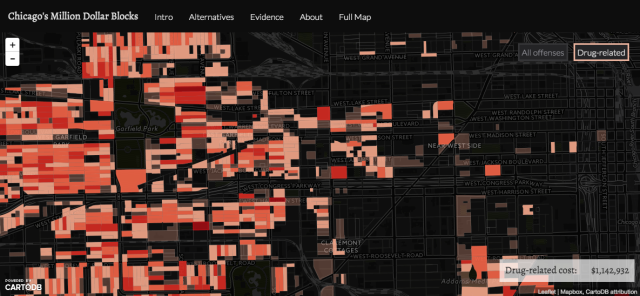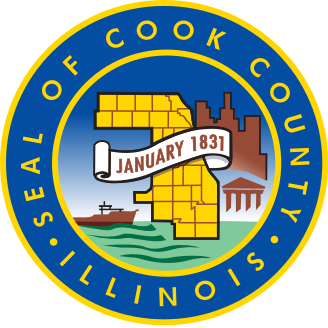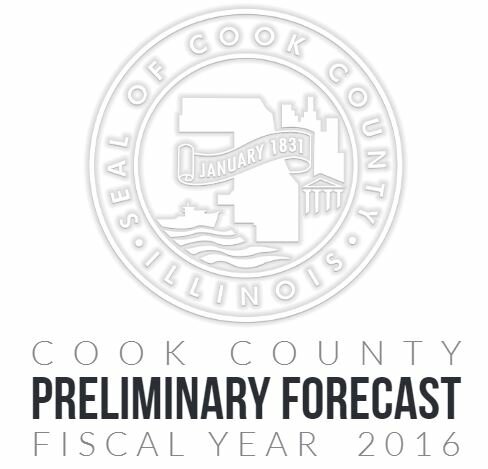 At this week’s Chi Hack Night, Dr. Dan Cooper from Adler University and Cathy Deng from DataMade presented Chicago’s Million Dollar Blocks – a site that shows how much Illinois spends on incarceration at the block level.
At this week’s Chi Hack Night, Dr. Dan Cooper from Adler University and Cathy Deng from DataMade presented Chicago’s Million Dollar Blocks – a site that shows how much Illinois spends on incarceration at the block level.
About the project
The concept of a “million dollar block” refers to a project done by the Spatial Information Design Lab that mapped out places where the government was spending over a million dollars on incarceration in a particular neighborhood. It is an adaptation of the original Million Dollar Blocks project, pioneered by Laura Kurgan of the Spatial Information Design Lab and Eric Cadora of the Justice Mapping Center.
This project was developed by Dr. Daniel Cooper and Dr. Ryan Lugalia-Hollon, who had been working to map out the cost of incarceration by zipcode. They worked with DataMade to create a visualization to showcase the costs of incarceration in Chicago and how it impacts particular neighborhoods.
The map the team created was based on data obtained by the Chicago Justice Project from the Cook County Circuit Court (as shown in our Convicted in Cook Project). That dataset shows all convictions in Cook County from 2005-2009 and includes data for what the offense was, the length of the sentence, and the offender’s residential address. The team then based each block’s dollar amounts from sentence lengths. The cost assumption is they used is that on average the Illinois Department of Corrections spends approximately $22,000 per year for each inmate.
Design Considerations
When DataMade built the site, they had a number of design considerations which Cathy Deng explained during the presentations.
1) Value clarity and simplicity
One of the things that the team had to consider is that while it was possible to add much more detail to the site, it would have made things overly complicated. They opted to keep the site simple and focus on the story that the team was working to tell.
2) Design for people who skim
Deng also spoke about the issue of people not having all the time in the world to read every single word on a site. Part of the user experience design was to assume that people would skim through the site. Deng used subheadings and text callouts to make certain points stick out in order to get the most important information across.
3) Make sure it works on mobile
Almost half of the traffic on Chicago’s Million Dollar Blocks comes in through mobile devices. A large part of Deng’s work was making the site look good on mobile devices.
4) Design in the open
DataMade had opened sourced their code on their GitHub site so that other developers can learn from their work. The data that fuels the site was first opened up by the Chicago Justice Project in the context of our the groundbreaking project they did with Smart Chicago: Convicted in Cook. CJP Executive Director Tracy Siska worked hard to obtain that data and this second project helps crystalize the issues we work on in our Justice area of work. Helping encourage more work around liberated data is one reason why we exist.
5) Call to Action
The last point that Deng made was that projects should include a call to action – particularly when the projects are hitting on important social issues.
You can learn more about Chicago’s Million Dollar Blocks here.






